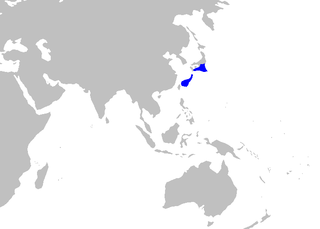Related Research Articles
Year 202 BC was a year of the pre-Julian Roman calendar. At the time it was known as the Year of the Consulship of Geminus and Nero. The denomination 202 BC for this year has been used since the early medieval period, when the Anno Domini calendar era became the prevalent method in Europe for naming years.

Ptolemy V Epiphanes, son of the siblings Ptolemy IV Philopator and Arsinoe III of Egypt, was the fifth ruler of the Ptolemaic dynasty from July/August 204 to September 180 BC.
In Greek mythology, Tlepolemus was the leader of the Rhodian forces in the Trojan War.
Tlepolemus was the son of Pythophanes and one of the hetairoi of Alexander the Great, who was joined in the government of the Parthians and Hyrcanii with Amminapes, a Parthian, whom Alexander had appointed satrap of those provinces. At a later period Tlepolemus was appointed by Alexander satrap of Carmania, which he retained on the death of Alexander in 323 BC, and also at the fresh division of the provinces at Triparadisus in 321. In the following years, Tlepolemus joined a coalition formed by governors of Upper Satrapies with the purpose of fighting Peithon, later assisting Eumenes in his war against Antigonus. Tlepolemus commanded 800 horsemen from Carmania in the Battle of Paraitakene, stationed on the right wing.

Neoptolemus was a Macedonian officer who served under Alexander the Great.

The salamander shark or salamander catshark is a little known catshark that inhabits a range from Japan and the East China Sea, on the upper to middle continental slope at depths of 358–895 m. Specimens of this species can attain a total length of at least 64 cm. This catshark is a potential bycatch of trawl fisheries operating within its range, but no details are available. There are high levels of squalene in this catshark's liver. The reproduction of this catshark is oviparous.
Polyxo is the name of several figures in Greek mythology:

Rickett's big-footed bat is a species of vesper bat. It can be found in southern and eastern China, Vietnam, and Laos. This species has often been called Myotis ricketti, but the older M. pilosus has priority. The erroneous reporting of the type locality as being in Uruguay by Wilhelm Peters led to the dual naming.
Panonychus ulmi, the European red mite, is a species of mite which is a major agricultural pest of fruit trees. It has a high reproductive rate, a short generation time and produces many broods in a year, all of which contribute to its pest status. It has a cosmopolitan distribution, and a very wide host range, having been found on the following plants:
Henry Beeke was an English historian, theologian, writer on taxation and finance, and botanist.
Hicksbeachia pilosa is a small tree in the family Proteaceae. This rare species is endemic to the rainforests of the wet tropics region of northeastern Queensland, Australia. It was first described in 1988 by Australian botanist Peter H. Weston, after a collection by Garry Sankowsky and Peter Hind in 1986 at Bobbin Bobbin Falls in North Queensland. Its specific name is the Latin adjective pilosus "hairy".
Tlepolemus is a Greek mythological figure, a son of Heracles who fought on the Greek side in the Trojan War.
Tlepolemus was regent of Egypt in the Ptolemaic period under the reign of the boy-king Ptolemy V. He was briefly prominent at the end of the 3rd century BC; his dates of birth and death are not known.
Anthodiscus pilosus is a plant species in the genus Anthodiscus found in Amazonian Colombia and Peru.
In Greek mythology, the name Damastor may refer to:

Lupinus pilosus, commonly known as blue lupine, is a species of flowering plant from the family Fabaceae which is endemic to Israel where it is found in Mediterranean scrubland. It has a 30–70 centimetres (12–28 in) long stem and 3–8 centimetres (1.2–3.1 in) long legume. The species blooms from February to May. The species have white coloured flowers which are 1–1.5 centimetres (0.39–0.59 in) long and pods the diameter of which is 3–8 centimetres (1.2–3.1 in). In Israel the Lupinus pilosus has blue flowers with white vertical spot at the middle.
Crossotini is a tribe of longhorn beetles of the subfamily Lamiinae. It was described by Thomson in 1864.
Tlepolemus is a genus of longhorn beetles of the subfamily Lamiinae, containing the following species:
Tlepolemus puerulus is a species of beetle in the family Cerambycidae. It was described by Thomson in 1864. It is known from South Africa.

Amminapes was a Parthian who was appointed satrap of the Parthians and Hyrcanii by Alexander the Great in 330 BCE.
References
- ↑ BioLib.cz - Tlepolemus pilosus. Retrieved on 8 September 2014.
| This Crossotini article is a stub. You can help Wikipedia by expanding it. |